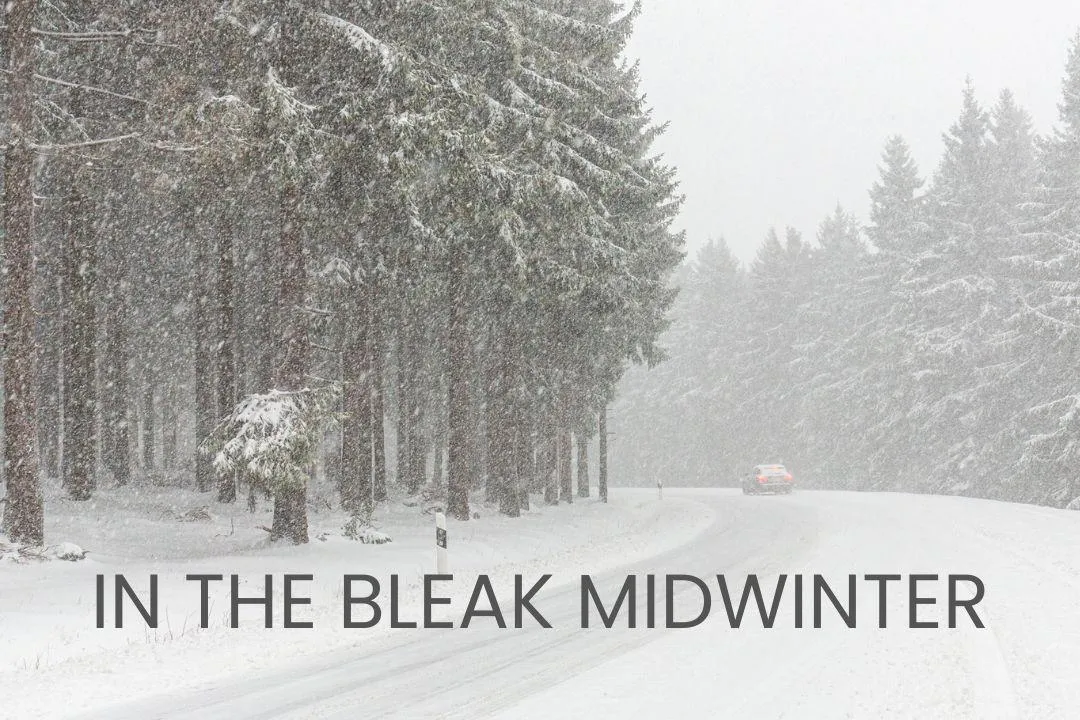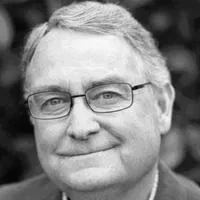

VISION HEALTH ARTICLES

In the Bleak Midwinter
A long time ago in a bleak midwinter, Debbie and I cleared all our earthly belongings out of the ten-by-sixty trailer house we’d lived in while I attended the university in Provo. We loaded it all in the back of an almost-clean cattle truck with tall rattling racks, wrapped our infant son in warm blankets, and headed north into the storm of the century. We were on a heading for Idaho Falls, deep in the heart of the Snake River Plain, where the frosty wind made moan and earth stood hard as iron.
We ventured northward, holding to little but hope as the snow flew and the wind blew and the icy road opened up to us a few hundred feet at a time: northward through Ogden and on past Brigham City and on past Tremonton. We rolled deeper and deeper into a new white world alien to the one where we’d grown up. We spun to the top of Malad Pass and slid down the other side toward Pocatello, somewhere out in that vast whiteness. On to Blackfoot we rode on a prayer, and sometime in the night, when white had turned to black, we saw the lights of Idaho Falls, and our hearts began to thaw as we entered the city where we would start our new life.
When people ask me how long we lived in Idaho Falls, I always answer: “Three years and five winters.” I do so with a smile because we loved Idaho Falls. We loved the people and the culture of down-home kindness and goodness. We loved to go snowmobiling, spend time at Island Park, and visit Yellowstone. I loved my job there, where I worked my apprenticeship as a journalist and cut my teeth as a writer. Our second and third sons were born there, and we made treasured friendships.
It was just that one thing: snow. Snow on snow. And snow on snow. At midwinter each year, we’d come home to Utah’s Dixie for the holidays. When it was time to drive back on New Year’s Day, we had barely begun to thaw out. And though I know it can’t be true, it seemed each time we headed back north, we found ourselves in the middle of the storm of the century.
As much as we loved our new home, it was grievously hard to leave our old home after each holiday season and venture back into the frozen north, especially that first trip back after we’d lived in Idaho Falls for a year and had come home for Christmas.
During that year, we’d moved from a small apartment into our first home—a home of our own. It was an older home in a nice, modest neighborhood of Idaho Falls. It was a dream come true to move in, and many of our new neighbors came to help us. However, our neighbors, whose carport was just across the chain-link fence, did not so much as peer out their window at us, though we sensed they were watching behind the blinds.
For days thereafter, those neighbors seemed to avoid us, and in our busy-ness, we failed to reach out to them. Days and weeks passed, and we never connected. We began to imagine things about them and rationalize our failure to meet them. They had large dogs in their backyard, and we noticed evidence beneath the fence that separated our property where the dogs had dug under. We eventually learned that there had been bitter disputes between our neighbors and the previous owners of our house. Finally, the day came when Debbie mustered the courage to take a plate of fresh cookies to their door. They were an older couple. The encounter was quick and curt.
When we left for St. George during the holidays that winter, we still hadn’t made a meaningful connection with our new neighbors. The thought of it bore heavily upon us as we thawed out in our hometown “where the summer sun spends the winter.” On New Year’s Day, when it was time to drive back, this time with two little boys in car seats, we didn’t want to leave. We knew we were driving into a storm, another literal storm of the century and another kind of storm with our neighbors that we were still trying to work our way through.
When we’d left Idaho Falls ten days earlier, there were already a couple of feet of snow on the ground and icicles that hung like daggers all around the eves of our house. All the windows had a glaze of ice over them, not only on the outside but on the inside, as well. We wondered if we would even have a house to come home to after Christmas or if it might be buried in a newly formed ice age.
Under normal circumstances, it was an eleven-hour drive from St. George to Idaho Falls. At the end of that Christmas holiday, as 1980 faded like a whiteout into 1981, it took us sixteen hours to drive to our Snake River Valley home. This was obviously before cell phones, email, and social media, and we had no idea what we would encounter when we finally pulled into Idaho Falls at 2:00 a.m. the next morning.
After all those hours crawling northward on a slick highway in near whiteout conditions, we pulled off the exit into Idaho Falls during the wee hours of that frozen and snow drenched morning. All the way, we had prayed that enough of the roads would be plowed through the neighborhoods of Idaho Falls for us to slip and slide into our own neighborhood. It was a dark, cold, and eerie night, especially as we drove into the white tunnels, where snow had been thrown up into six-foot embankments on both sides of the street, leaving just enough width for two cars to pass. It was as if we’d slid into an icy netherworld where the golden rays of the headlights lit up the white walls into which we slowly idled, block after block, knowing that behind those embankments sat homes with inhabitants snuggled under piles of quilts, dreaming of spring, while all we hoped for was to somehow get to within fifty feet of our new home and somehow transport our baby boys safely from the car to the house and into their icy beds.
As we drew nearer to our neighborhood, our hearts began to fail us. We began to resign ourselves to spending the rest of the night in our car with the gas needle near empty. Even forty years later, I feel the fear of that night in the deeper recesses of my heart.
I’ve always believed in prayer, but that night, our prayers were answered beyond anything we could have imagined. As we turned off a main road into our neighborhood, the way was clear. And as we reached our street and turned onto it, the way was clear. And as we passed through the white tunnel leading to our house, the golden shine of our headlights on the sparkling, mounded snow lifted our hearts as we knew we were now within a block of our home, within walking distance, if necessary. But as we pressed on, we saw a breach in the wall of snow up ahead, an opening right where we figured the driveway into our carport should be. And as we drew closer, we realized it was true.
The way was clear.
Someone had moved the equivalent of a ton of snow from the opening of our driveway and into our carport. We drove right in as if it were a perfect summer day. It was two short steps from the car door to the side door of our house. Our little boys had no idea what they’d been through when they woke up in their warm beds as the sun rose that morning and made our new white world glitter.
We learned the next day it was our neighbors with the big dogs who had cleared the way for our return that night. They didn’t know when we’d be home, but they had it ready for us when we did. I’m hard pressed, forty years later, to recall a more timely, thoughtful, or neighborly act of kindness in my life.
